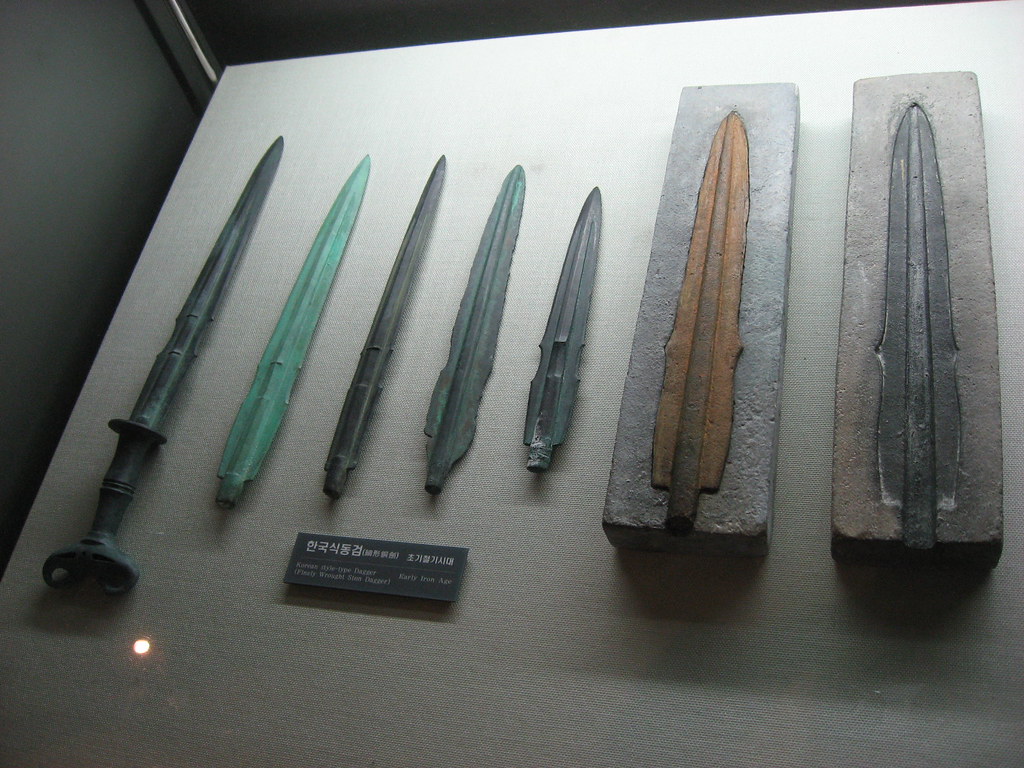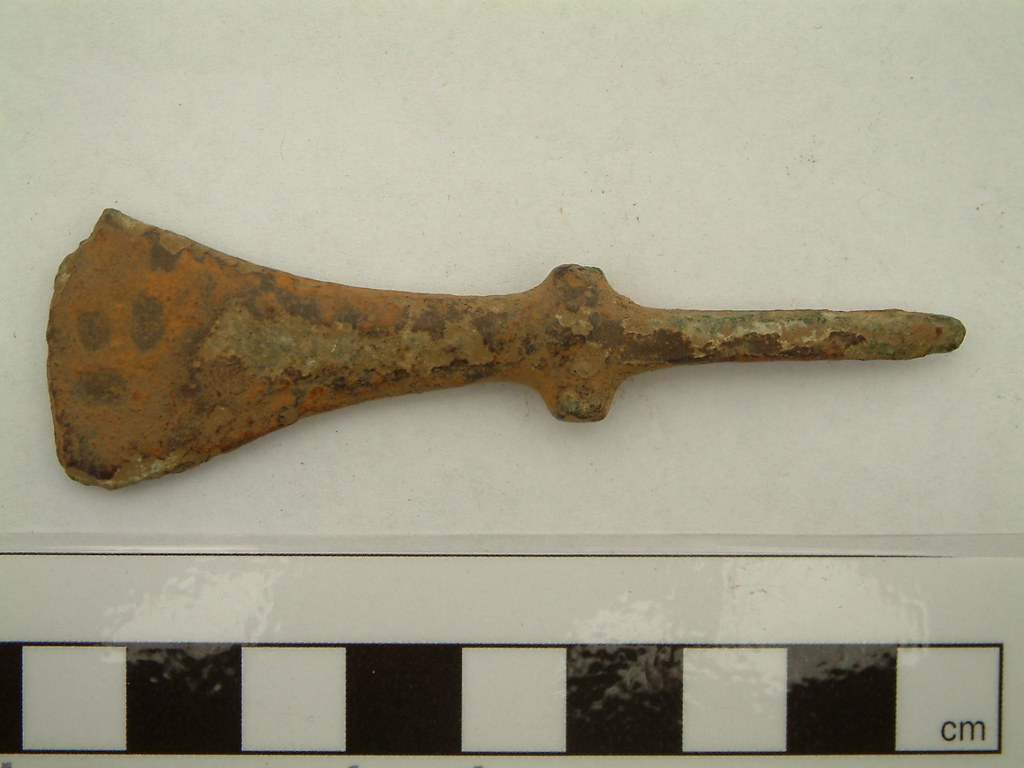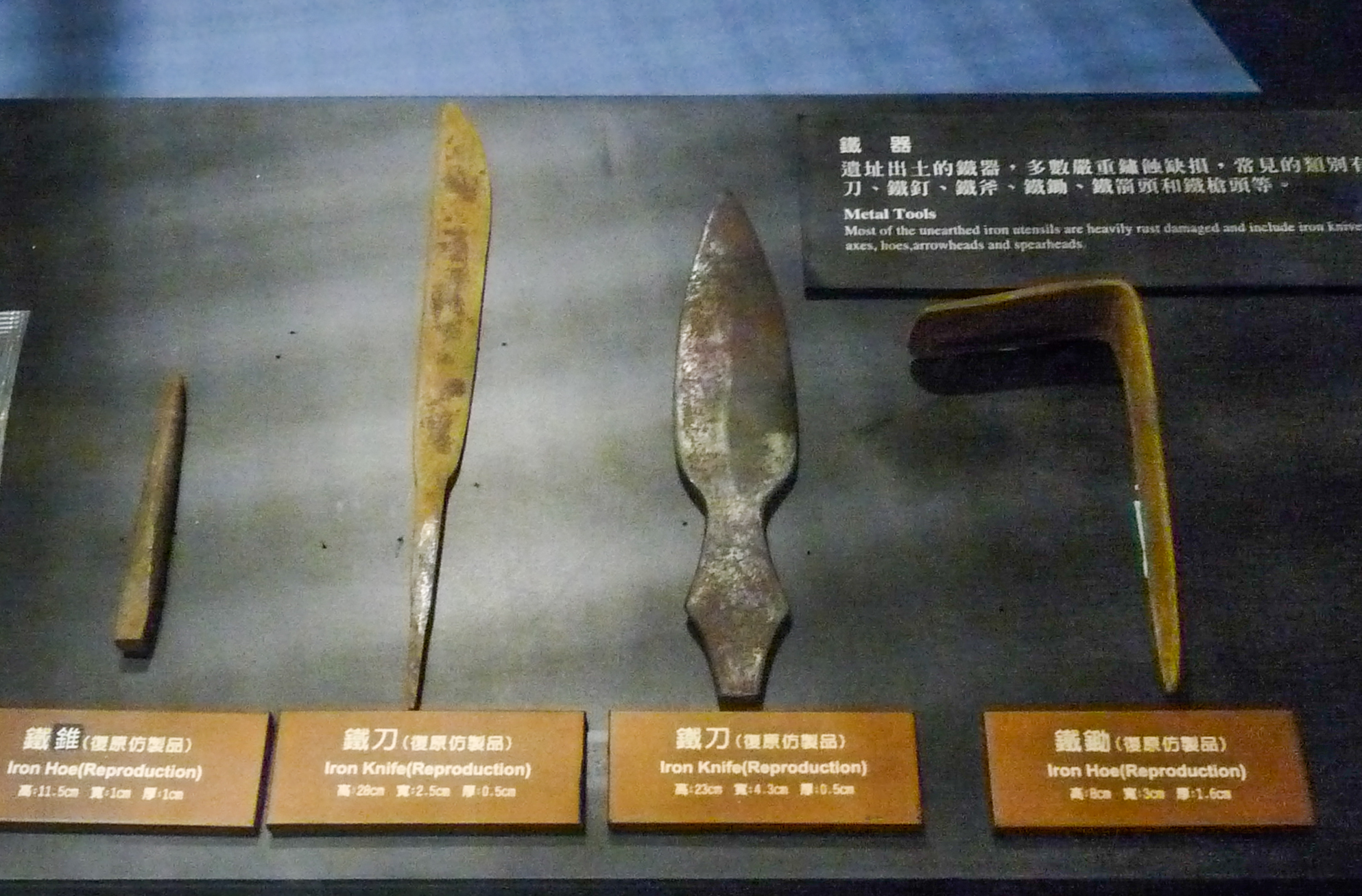Iron Age can be framed from 1200 B.C. to 600 B.C. when the discovery of iron led to many developments in various cultures and societies, causing Bronze Age civilizations downfall and new kingdom formations, revolutionizing warfare, agriculture, writing, vehicles construction, building, and definitely contributed to shape the “new age”.

Image source: https://search.creativecommons.org/photos/190f75fd-5098-4d7d-be3c-6a75f53930df by Kai Hendry
Iron Age time coordinates
The Iron Age started between 1200 B.C. and 600 B.C. following the Stone Age and Bronze Age. During this period, people in Europe, Asia, and Africa started manufacturing tools and weapons from iron and steel. The Iron Age is conventionally identified by the change from bronze to iron and steel. The shift occurred at different periods in different locations, as the technology spread. For example, in Mesopotamia, the Iron Age began in 900 BC. In India, the Iron Age began at about 1200 BC; in Central Europe at about 800 BC; and in China at about 300 BC. Around 500 BC, the Nubians, who had studied from the Assyrians the application of iron, were expelled from Egypt and became the major producers and exporters of iron.

Image source: https://en.wikipedia.org/wiki/Iron_Age#/media/File:Krieger_von_Hirschlanden.jpg
Iron Age facts
The Iron Age began around 1200 B.C. with the downfall of several famous Bronze Age civilizations, including the Mycenaean society in Greece and therefore the Hittite Empire in Turkey. Ancient cities like Troy and Gaza were destroyed, trade routes were lost and literacy declined throughout the region. The cause for the collapse of those Bronze Age kingdoms remains unclear. Earthquakes, famine, sociopolitical unrest and invasion by nomadic tribes may have contributed. Some experts believe that a pause in trade routes may have caused shortages of the copper or tin accustomed to make bronze around this point.

Image source: https://search.creativecommons.org/photos/cd571f4d-875f-4990-9218-fe9866f6e4ff by portableantiquities
Metalsmiths may have turned to iron as an alternate. Iron was tougher than bronze, so Iron Age people could create sharp tools like swords and spears. They also made harvesting devices from iron, like plough (Ard) and sickles. Iron tools played a very important role within the development of cultures and societies and therefore the establishment of kingdoms. The discovery of limonite (a mineral made from a combination of hydrous ferric oxides) makes smithery possible. Farming tools were improved and also the simple wooden plough was replaced with an iron-tipped plough (Ard). It made agriculture easier and resulted in an exceedingly high yield of crops. Woodpole Lathe invention allowed the woodworkers to create more practical and useful items from wood, like bowls and buckets.

Image source: https://search.creativecommons.org/photos/b82fe71f-733b-4957-8e0f-a4b01aabd892 by portableantiquities
Iron smelting and early metallurgy
Image source: https://search.creativecommons.org/photos/277ad184-f7e1-49dc-a49d-db682073f879
The earliest iron artifacts are nine small beads dated to 3200 BC, discovered in tombs at Gerzeh, Lower Egypt. These tools have been identified as meteoric iron cast by thorough hammering. Meteoric iron is a unique iron-nickel alloy. It was used by several ancient communities thousands of years before the Iron Age. This iron, being in its original metallic state, doesn’t require smelting of ores. In addition to specially designed furnaces, ancient iron production required complex procedures development in impurity removal; the regulation of the admixture of carbon and hot-working to reach a useful balance of hardness and strength in steel.
Iron Age tools
- Ard was a scratch plough with the pointed iron tip
- Iron sickles for harvesting crops
- Coulter was an iron-made farming tool used for breaking the ground
- Ploughshare was a farming tool used for making uniform rows in the field
- Lances and spears were long wooden weapons with iron tips
- Rotary quern was a machine for grinding grains
- Potters Wheel for making pottery
- Wood lathe was a machine like structure for shaping wood and other things into objects
- Iron rudder was used on the ship to make it steer on its own
- Iron chisel was a tool used for cutting wood, stones, metals, and other hard things
- Cooking Tools: pots, cauldrons, vessels
- Hunting Tools: swords, daggers, lances, and spears
In the Iron Age, forgers would have used three basic tools for making objects from iron: Hammar, anvil (a heavy iron block used for hammering and shaping metal), tong (a rod or pillar-like structure for holding the hot metal).

Image source: https://search.creativecommons.org/photos/a2ffc2f6-07ad-47c2-b4c3-54536ccd0e38 by Ismoon (talk) (merci Hélène !)
Info source:
https://kidzfeed.com/iron-age-tools-and-weapons/
https://www.history.com/topics/pre-history/iron-age
https://www.britannica.com/technology/hand-tool/Iron-and-steel-tools
https://en.wikipedia.org/wiki/Ferrous_metallurgy#
